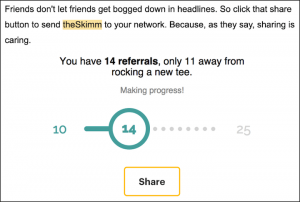— December 5, 2017

geralt / Pixabay
As leaders work to improve the employee experience, offboarding often remains as an area that needs closer attention.
Organizations are better equipped than ever to attract outstanding employees, onboard them with strategic orientation and training programs, manage their performance, and meaningfully recognize their contributions.
Where many organizations tend to falter is in conducting exceptional offboarding practices, if they’re conducted at all. According to Aberdeen research, only 29 percent of organizations have any formal offboarding processes in place.
As we mentioned in “How to Optimize Your Employee Lifecycle,” every person that you hire will eventually leave your organization. Why not embrace this graduate phase of the employee lifecycle, and tap into it as a valuable opportunity?
Here are some practices you can adopt to make the most of the offboarding process and provide the optimal experience for your organization and its employees.
Celebrate their contributions
If an employee is leaving on good terms and has been an asset to the company, make sure to give them a warm and memorable farewell celebrating their service and contributions to the organization. An offboarding celebration is the time to publicly highlight an employee’s impact on the organization and show appreciation for their work.
It’s crucial to treat employees with respect throughout the offboarding process. Recency bias is a commonly referenced leadership mistake, but it works both ways.
The most recent experience an employee had with your organization will stand out.
Departing employees will surely tell others about their experience in your organization, and they’re more likely to speak positively about it if they receive a warm and respectful sendoff.
Although offboarding is an opportune time to uncover what made exiting employees unhappy, it is also a time to build them up, demonstrate your gratitude for their service and talents, and show support for their future. Keep the atmosphere positive and know that former employees, regardless of their reasons for leaving, can still serve as ambassadors for attracting talent as well as potential clients for years to come.
Uncover insights
Although an employee’s exit isn’t often something anyone looks forward to, it is a unique and valuable opportunity to learn and improve.
There is no magic formula for this step, except to listen with genuine interest. Ask the employee why they are leaving, provide them a safe environment to be candid, and prepare to hear some things that may surprise you — just remember to listen attentively. This isn’t a time for apologies or rebuttals.
Ben Eubanks, in his Society for Human Resources Management blog post “Should You Celebrate When Employees Leave?”, remarks:
“If we take out the resignations that are due to poor management, culture mismatch, and so on, we are left with those employees that are truly leaving to advance their careers. On one hand, this is helpful for your recruiters and others internally to see where the perceived limit is for employees in terms of development. If staff are consistently leaving around the 18-month mark, are they bored? Have they mastered ‘everything’ in terms of their job duties? Are they topped out in terms of compensation? What is driving them to seek other employment?”
Simply accepting an employee’s letter of resignation without endeavoring to learn more about their motivations is a missed opportunity for organizational growth.
Let them know how valuable their thoughts and feelings are to you and find out the reasons for their departure. Your notes from just one exit interview may prove to be the keys for future success in that job position.
Are they leaving to advance their career? If so, consider how you could have satisfied that need for them, and how can you work to satisfy those needs proactively for current employees. Is it the work, the people, the management, the product or service the company provides? This is crucial information that can help your organization evolve.
It’s easy to make assumptions as to why someone decided to leave, but those assumptions aren’t often accurate or beneficial. For example, millennials have been accused of job-hopping and seeking greener pastures more often than their parents or grandparents. However, according to the Bureau of Labor Statistics, Baby Boomers changed jobs on average nearly 11.9 times between ages 18 and 50. This is a remarkable statistic because it directly refutes tragically common prejudices and assumptions about generational difference in the workplace.
Nothing can replace a face-to-face chat in its ability to uncover priceless feedback from the resigning employee; however, one additional tool on the market that can assist with the process, including an exit interview checklist, compensation finalization, and an analysis of workforce trends, is Oracle’s Employee Separation to Workforce Analysis.
Whether you survey outgoing employees with online questionnaires, in-person discussions, or both, the point is to take the initiative to find out why they’re leaving.
If employees believe their remarks and input will be taken seriously during an exit interview, they will be more willing to share their thoughts. Just don’t be alarmed if you uncover that one of the reasons for leaving is because of a supervisor or manager.
A recent Gallup study of 7,272 US adults found that at some point in their career, fifty percent had left a job to get away from their manager to improve their overall life.
Additionally, a recent Forbes article points out that, according to the Bureau of Labor Statistics, employees who stay at the same employer for longer than two years get paid 50 percent less than if they switched to another company.
While this statistic may be eye-opening for many business leaders, it is exactly the type of information that can illuminate what changes need to be made in order to prevent others from jumping ship.
Provide support
After you’ve discovered their reasons for leaving, do what you can to help departing employees in their careers. Assign someone to personally guide the employee through the offboarding process and provide them with resources to assist in their career.
Be sure to share the contact details of your company through which the employee can remain in touch. If the employee is leaving on good terms, reassure them that your company would be happy to have them back and that they can reach out for any support in the future.
Some companies even go so far as to create alumni groups of former employees and manage social sites so that company alumni can keep in touch with one another and offer support where needed.
These programs have proven successful in improving employee engagement and recruitment strategies. According to Aberdeen, more than 50 percent of organizations are leveraging or planning to leverage alumni sites that facilitate discussions, provide information about job openings, and publicize company initiatives.
Promising good recommendations and intros isn’t enough. Follow through.
Proactively facilitate introductions and get the word out that there’s a great new candidate on the market. Showing this kind of genuine concern can actually produce a boomerang effect where employees who leave remember how they were treated and either come back with renewed energy, engagement, and loyalty, or send great candidates your way.
Network
If you’ve treated the employee who is leaving with respect and you’ve shown them that you care about their future, ask them if they might know someone who would be a good fit for the position they are leaving. See if they will serve as an ambassador for your company.
Entrepreneur recently cited a statistic from Jobvite that found that 78 percent of 1,404 recruiters and human resource professionals surveyed said referrals identified the best candidates. Departing employees are more willing to send qualified candidates to your organization if their personal experience was overwhelmingly positive. Ask them to tout your company’s values and reputation and to help bring on board people you can trust.
Make a Plan
A basic format of your offboarding plan should always be in place: a customizable, dynamic document can be fitted for each specific offboarding event. The plan should include a matrix of sorts that outlines the answers to questions like:
- Why are they leaving?
- Who will be involved in the process?
- Will the departing employee receive severance pay and extended benefits?
- Who will the exiting employee’s workload be transferred to?
- How will knowledge transfer be structured?
- When and how do we post for the vacant position?
- Where will we look for the new talent?
- How do we improve on retention based on offboarding process findings?
This is far from an exhaustive list. Create a plan unique for your business and add or delete items as needed. This is a basic, must-have practice for every business.
Make quality offboarding a priority
Understanding why an employee is leaving is a major concern for departments of all sizes. It’s a valuable opportunity that can help improve recruitment efforts, minimize unnecessary turnover, maximize and fine-tune training endeavors, and increase employee engagement.
By optimizing offboarding efforts and processes, you can learn how to increase efficiency in every other phase of the employee lifecycle. Take time to evaluate the offboarding process you have in place today and where you can improve and standardize your system. Some benefits may not be realized immediately, but your company will certainly be rewarded in the long run.
Business & Finance Articles on Business 2 Community
(140)






